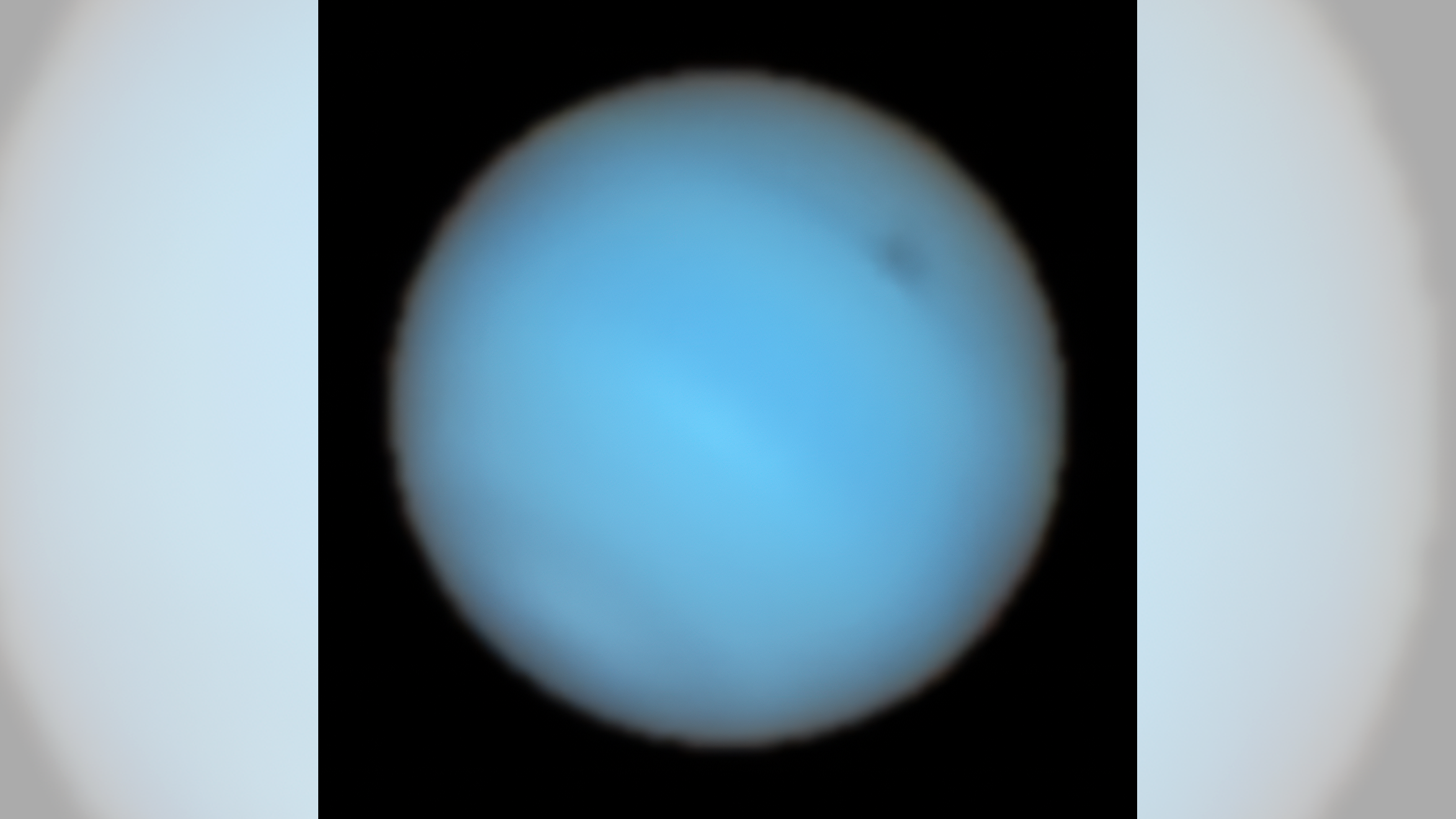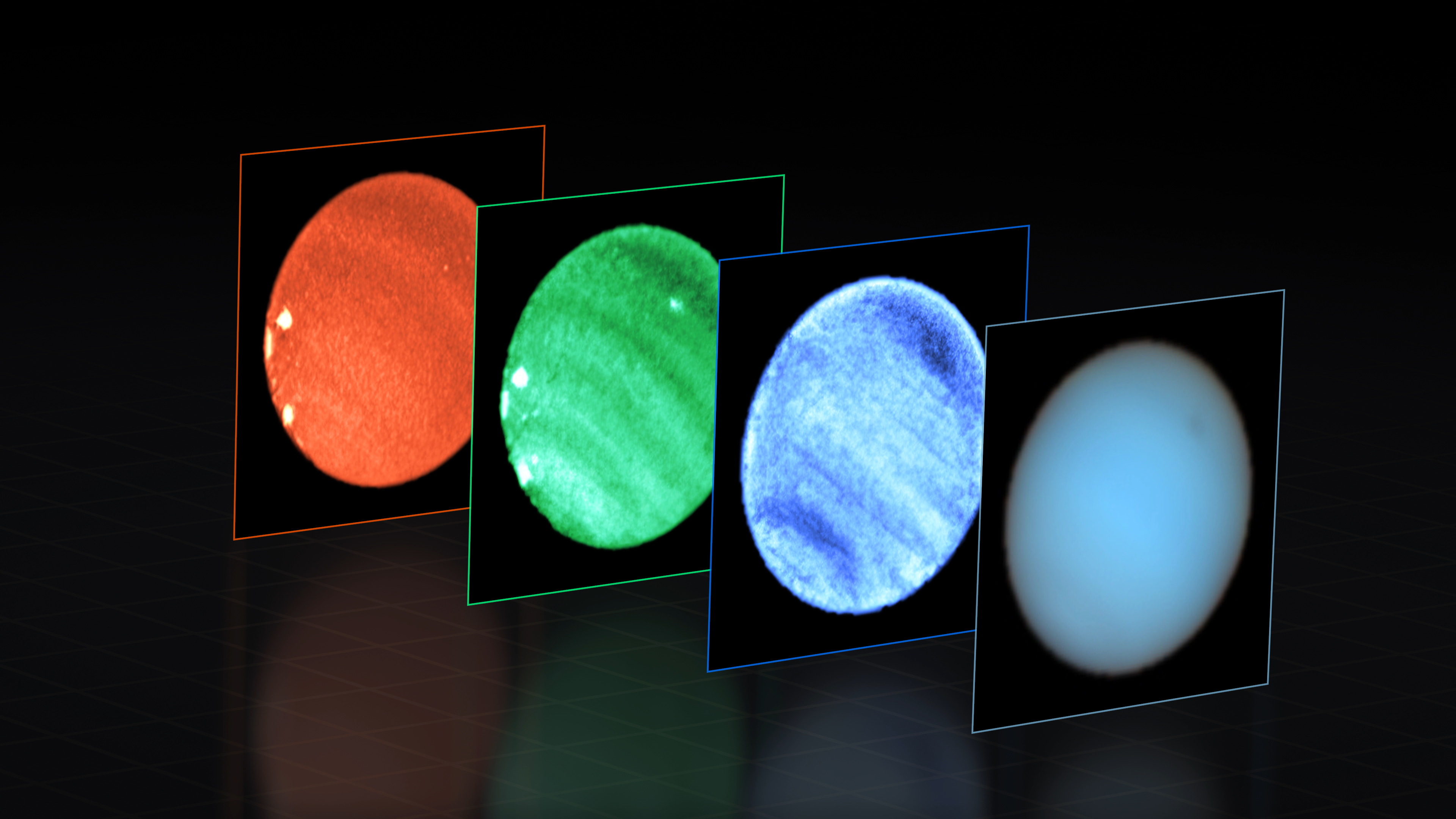Neptune keeps growing enormous dark and bright spots, and scientists don't know why
Scientists are still in the dark about what is causing a huge shadowy patch to appear against the blue background of Neptune’s sky.

Astronomers have observed a huge, mysterious dark spot on the surface of Neptune from Earth for the first time — and discovered a puzzling bright counterpart close to it.
While scientists still don't comprehend the origins of this shadowy patch on the blue surface of the distant ice giant, new observations made using the Very Large Telescope (VLT) could help shed some light on this puzzling Neptunian feature.
A dark spot on Neptune was first discovered by NASA's Voyager 2 spacecraft in 1989 when it flew by the eighth planet from the sun on its way out of the solar system. Dark spots on the surface of planets were familiar to astronomers already. Since the 1800s, they had been studying Jupiter's "Great Red Spot," a storm that has been raging on the gas giant for at least 200 years. The dark spot on Neptune was strange, however, because it disappeared after Voyager 2's observations. Then, in 2018, the Hubble Space Telescope detected several new Neptunian dark spots in both the planet's southern and northern hemispheres.
Related: All of Neptune's clouds have mysteriously disappeared, and the sun may be to blame
This piqued the interest of University of Oxford professor Patrick Irwin, who led a team to investigate Neptune with the VLT's Multi Unit Spectroscopic Explorer (MUSE), focusing on one of the spots in the planet’s northern hemisphere. By doing this, the researchers hoped to dismiss a previously proposed explanation, that the dark spots are caused by a clearing in clouds over the frozen surface of the ice giant.
"Dark spots are very large, 6,200 to 9,300 miles (10,000 – 15,000 km) in diameter and very mysterious,” Irwin, lead author of a paper published in the journal Science, told Live Science via email. “When the Great Dark Spot was observed by Voyager 2, there was some speculation that it might be similar to Jupiter's Great Red Spot, but we now know that Neptune's dark spots are very different. In addition to seeing a dark spot from Earth, we have also detected a deep, bright spot, labeled DBS-2019, next to the dark spot, which has never been seen before."

Still in the dark about the "spottiness" of Neptune
The team used MUSE to measure reflected light, broken down into component colors, from Neptune's dusky patch and found that this spot isn't darker than its surroundings due to the density of clouds above it.
Sign up for the Live Science daily newsletter now
Get the world’s most fascinating discoveries delivered straight to your inbox.
Instead, it is because the particles in this level of the atmosphere are themselves darker, emitting light at wavelengths of 700 nanometers — around the color red in the electromagnetic spectrum.
The light spot seen by the astronomers, which is at the same level in the atmosphere as the dark spot, wasn't present in observations of Neptune conducted a few weeks before MUSE collected its data, and this seems to imply it is a short-lived feature.
"The fact that it's so close to the dark spot is interesting and suggests some connection, although what that connection is is not known," Irwin explained.
The researchers also aren't yet sure what causes the dark spots on Neptune, but Irwin said they can put forward a few viable hypotheses for the origins of these shadowy patches.
"We suggest it could be caused by the addition of darker particles from below," Irwin said. An alternative theory is that ultraviolet light is causing local heating, turning hydrogen sulfide ice straight from a solid to a gas, releasing a darker haze in the Neptunian atmosphere. "We need more observations and also more dynamical modeling to figure out what's going on here," Irwin added.
The ability to see features like this from Earth represents a massive step forward in planetary astronomy, but Irwin and the team now intend to look deeper with an instrument located off the surface of our planet, the James Webb Space Telescope (JWST).
"We're also part of a team set up to analyze recent observations of Neptune made with JWST," he concluded. "I can't wait to get cracking on these data!"
Robert Lea is a science journalist in the U.K. who specializes in science, space, physics, astronomy, astrophysics, cosmology, quantum mechanics and technology. Rob's articles have been published in Physics World, New Scientist, Astronomy Magazine, All About Space and ZME Science. He also writes about science communication for Elsevier and the European Journal of Physics. Rob holds a bachelor of science degree in physics and astronomy from the U.K.’s Open University











